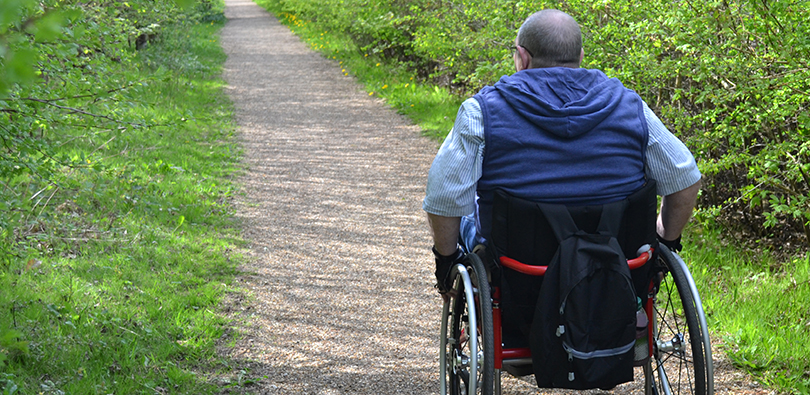
Researchers from the NCSEM-EM and the Peter Harrison Centre for Disability Sport together with colleagues in Canada have developed scientific guidelines to inform people with spinal cord injury (SCI) how much exercise is necessary for important fitness and health benefits.
The guidelines, developed through a series of consensus panels, are now ready to be shared with local spinal cord injury communities to determine the most suitable format and methods of distributing the guidelines more widely.
Loughborough University academics from the NCSEM-EM and the Peter Harrison Centre for Disability Sport (PHC), along with a Canadian team led by Professor Kathleen Martin-Ginis, carried out an 18-month process to systematically review and build on previous bodies of work to form evidence-based scientific exercise guidelines. The resulting guidelines are being presented at the International Spinal Cord Society (ISCoS) Annual Scientific Meeting in Dublin today.
Three consensus panels took place in the UK and Canada with European, American and Australian scientists, clinicians and people with SCI providing feedback and putting forward recommendations to an international panel to reach a final agreement on the scientific guidelines.
This resulted in a set of guidelines around the types of exercises that are effective and advice on the frequency, intensity and duration of the exercise to improve fitness (cardiorespiratory fitness and muscle strength) and cardiometabolic health (body composition and cardiovascular risk factors).
It is recommended that to improve fitness, adults with SCI should engage in at least 20 minutes of moderate to vigorous intensity aerobic exercise two times a week and three sets of moderate strengthening exercise for each major functional muscle groups two times per week. To improve cardiometabolic health, it is suggested they engage in at least 30 minutes of moderate to vigorous intensity aerobic exercise, three times per week.
Over the coming months, groups in the UK, Canada, the Netherlands, Sweden and other countries will work with spinal injury charities, disability sport organisations, rehabilitation units and people with spinal cord injury to gather feedback to inform how the scientific version of the guidelines will be translated into community and clinical practice and implemented in these countries.
Physical activity guidelines for this population are crucial as studies have shown that people with SCI are among the most physically inactive and deconditioned individuals compared to the general population. People with SCI face many challenges and barriers to physical activity participation, while physical responses to exercise also change in this population due to muscle paralysis and an impaired nervous system.
Dr Jan van der Scheer, lead research associate on the project, said: “Cardiometabolic diseases are among the leading causes of death in adults with spinal cord injuries, so guidelines that address cardiometabolic health are extremely valuable.
“The recommendations were put together following months of international deliberations and can now be tailored from country to country in terms of language and type of exercise examples used.
“It is exciting to have this work ready to share with the spinal cord injury community after several months spent reviewing the evidence and developing the scientific guidelines we now have in place.”
Professor Vicky Tolfrey, Director of the Peter Harrison Centre for Disability Sport, said: “This is a great example of combined resources and a real team effort. I am proud of the outcomes of this project.”
Professor Mark Lewis, Dean of the School of Sport, Exercise and Health Sciences at Loughborough University and Director of the NCSEM-EM, added: “The NCSEM is leading the way in research into disability populations and this is highlighted through the development of these important scientific exercise guidelines.”
Professor Kathleen Martin Ginis, lead of the Canadian team at the University of British Columbia said: “These guidelines are a clear foundation for developing exercise policies and programmes for people with SCI around the world.”
Find out more
The research has been published this week in the journal Spinal Cord.
The paper resulting from the systematic review process ‘Effects of Exercise on Fitness and Health of Adults with Spinal Cord Injury: A Systematic Review’ was recently accepted by the leading clinical neurology journal Neurology.
Dr van der Scheer also recently presented a webinar looking at the overarching process of knowledge translation and guideline development in the context of spinal cord injury, expanding on the systematic review and consensus panels that took place as part of the process. Watch the webinar here.
Follow the launch of the guidelines on Twitter using #SCILaunch